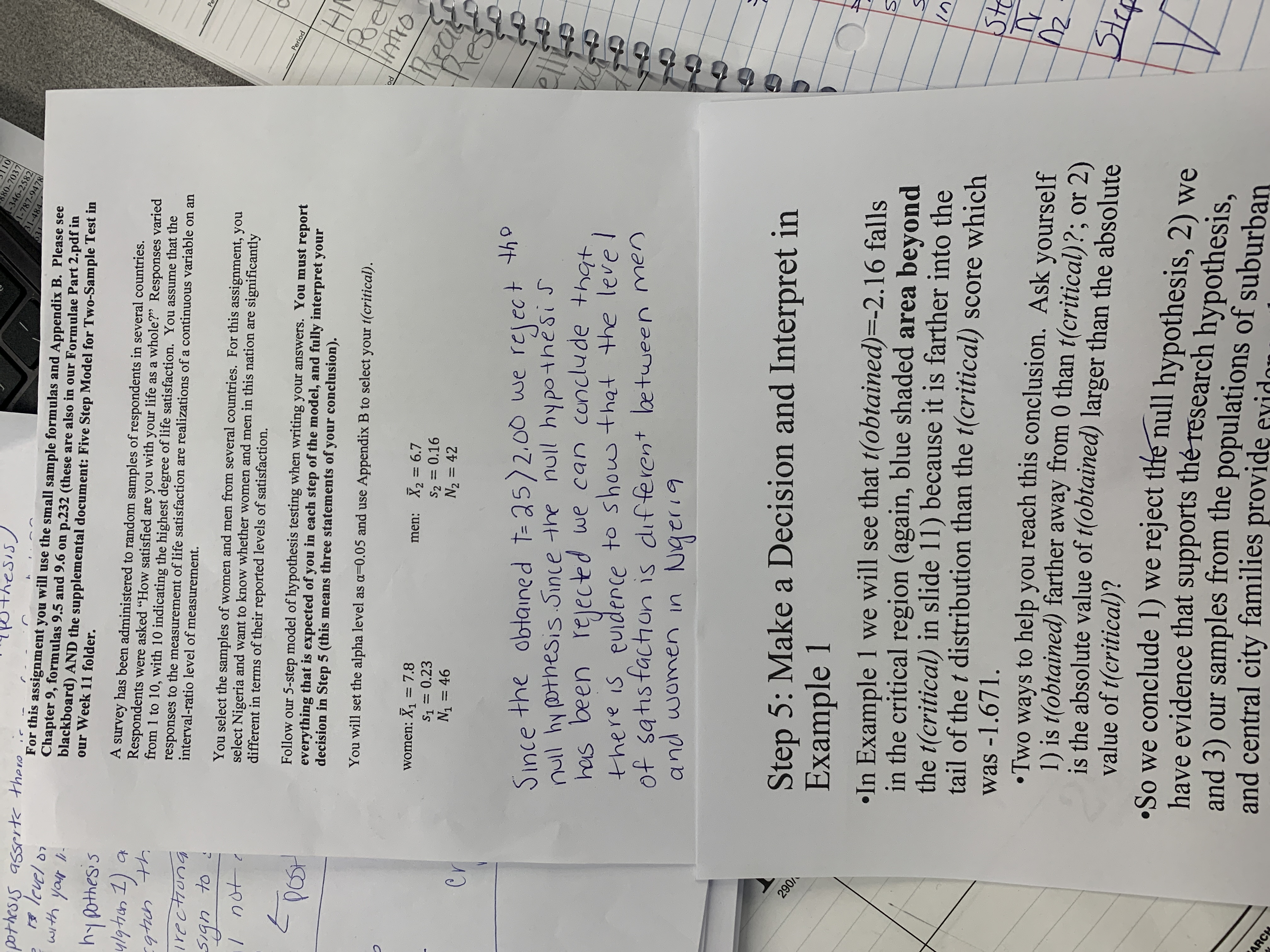how do i write a fully interpretlion
80-7037 pothesis) -346-2582 pothesis asserts there is. 1-787-9478 1-484 level on For this assignment you will use the small sample formulas and Appendix B. Please see with your li- Chapter 9, formulas 9.5 and 9.6 on p.232 (these are also in our Formulae Part 2.pdf in blackboard) AND the supplemental document: Five Step Model for Two-Sample Test in hypothesis our Week 11 folder. 4/ gtion 1 ) A survey has been administered to random samples of respondents in several countries. gtich th Respondents were asked "How satisfied are you with your life as a whole?" Responses varied from 1 to 10, with 10 indicating the highest degree of life satisfaction. You assume that the responses to the measurement of life satisfaction are realizations of a continuous variable on an Irectiona interval-ratio level of measurement. sign to You select the samples of women and men from several countries. For this assignment, you 1 not select Nigeria and want to know whether women and men in this nation are significantly different in terms of their reported levels of satisfaction. -Period - Post Follow our 5-step model of hypothesis testing when writing your answers. You must report everything that is expected of you in each step of the model, and fully interpret your decision in Step 5 (this means three statements of your conclusion). HA You will set the alpha level as a=0.05 and use Appendix B to select your t(critical). women: X1 = 7.8 men: X2 = 6.7 $1 = 0.23 $2 = 0.16 N1 = 46 N2 = 42 er Res Since the obtained += 25 / 2.00 we reject the null hypothesis Since the null hypothesis has been rejected we can conclude that there is evidence to show that the level of satisfaction is different between men and women in Nigeria 290/ Step 5: Make a Decision and Interpret in Example 1 .In Example 1 we will see that t(obtained)=-2.16 falls in the critical region (again, blue shaded area beyond the t(critical) in slide 11) because it is farther into the tail of the t distribution than the t(critical) score which was - 1.671. ste .Two ways to help you reach this conclusion. Ask yourself 1) is t(obtained) farther away from 0 than t(critical)?; or 2) is the absolute value of t(obtained) larger than the absolute value of t(critical)? .So we conclude 1) we reject the null hypothesis, 2) we have evidence that supports the research hypothesis, and 3) our samples from the populations of suburban and central city families provide evida







